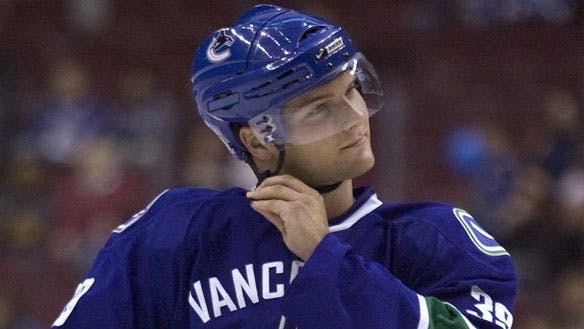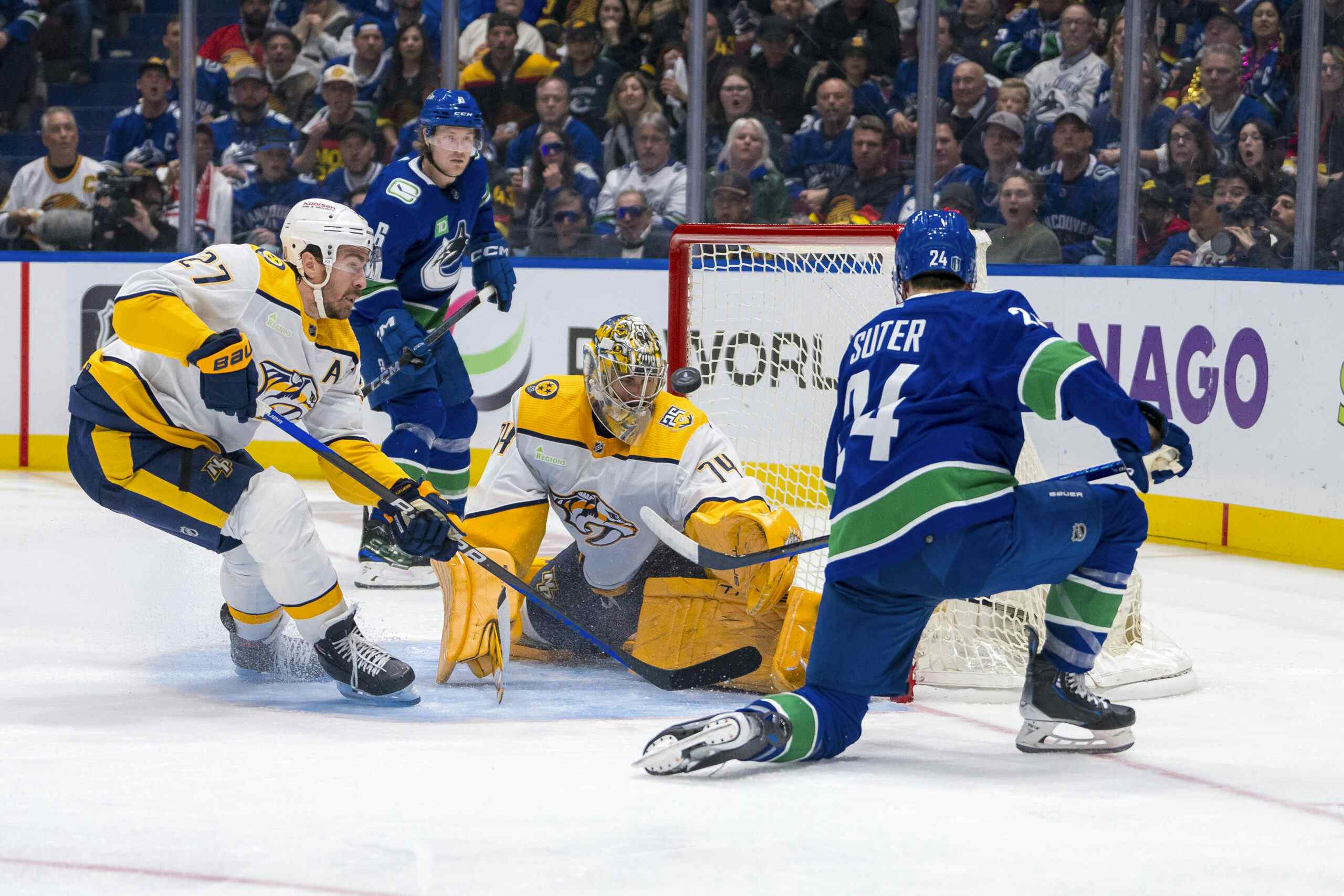Cody Hodgson and Failing Successfully
By Jeff Angus
12 years ago
We shouldn’t be surprised to see Cody Hodgson perform well above expectations this season. Like a few current and former great players in Vancouver, he has battled adversity early in his career after being a highly-touted prospect. Does failure lead to success? Does early career adversity help players in the long run? Yes seems like the logical answer judging by several recent examples.
This article from the Wall Street Journal takes a look at failing successfully.
“The psychologist David Nussbaum has shown that whether we tend to learn from mistakes or brush them aside, the response is rooted in repairing our self-esteem. Failure is never fun, but success requires that we learn to fight through our frustration and find the upside of error.”
Hodgon’s failures over the last few years were very much the result of a serious back injury. He was doing dead lifts during a summer training session in 2009, and ended up tearing a muscle in his back. The injury was misdiagnosed as a disc issue, and like any aspiring young hockey player, he tried to play through the pain in hopes it would subside. The injury never healed, and he had to undergo extensive physiotherapy during the season just to be healthy enough to play. It’s hard enough for a healthy player trying to making the jump to professional hockey, yet alone one who was dealing with a chronic injury like Hodgson.
All three members of the West Coast Express faced adversity early on in their respective careers. Brendan Morrison was basically kicked to the curb in New Jersey by Lou Lamoriello. He did have a successful rookie season in 1998-1999, recording 46 points (second among rookies in the league). Morrison didn’t like his contract offer the next summer, and held out until late October 1999, firmly entrenching himself in Lamoriello’s doghouse. He played most of the season with New Jersey before the trade to Vancouver. The Devils didn’t think he was a top six forward, or at least they didn’t think he deserved to get paid like one. He sure proved them wrong quickly.
Todd Bertuzzi arrived on Long Island to much fanfare. Like all young power forwards in that organization, he was immediately hailed as the next Clark Gilles. Bertuzzi struggled under the pressure (a theme for later in his career). He was traded to the Canucks in 1998, and developed into the most dominant power forward in the league, peaking in 2002-03.
Naslund is one of the most well-known early career failures in league history. On the outs in Pittsburgh, he was flipped for the soon-forgotten Alek Stojanov. The rest, as they say, is history. Naslund became Vancouver’s captain and career leader in every major offensive category. The members of the West Coast Express came together in a perfect storm type of situation, but all three benefited from early career failures elsewhere before coming to Vancouver.
The Sedin twins, two of the best forwards in the world, were both labelled as busts after their first few years in the league. They were brought over to play in the NHL as 18 year olds, and spent the next six years toiling away as depth players. Every odd game you would see a flash of elite talent, but they were too slow and too weak for the NHL game (much like Hodgson last season and the one before). However, they worked extremely hard on the ice, and paid their dues on the ice, taking each failure in as a learning experience. Having them around to mentor Hodgson, a player who came in with similar hype as a prospect, has likely helped considerably.
Fans and media need to realize that not all young players develop in a positive linear direction (each season better than the last). In fact, the majority of young players have inconsistent and erratic production for the first few years of their career. The Canucks are lucky they have a patient general manager, or perhaps Hodgson would be shining elsewhere this season. There are countless examples of teams giving up on proven prospects early on in their professional careers (the most notable example for Canucks would be the trading away of Cam Neely).
Bertuzzi was a physical specimen, and Morrison relied a lot on his speed. The Sedin twins and Hodgson have a lot in common – all three are cerebral players who have had to excel using anticipation and instincts, as they are below average (or average) in terms of skating speed. The Sedins are very strong skaters now, but they weren’t always that way. It’s a lot easier for a young player to develop balance than it is for him to develop anticipation. Hodgson has gotten off to a very good start, but don’t be surprised to see him struggle a bit this season, as well. He has his full health back and can now get back to training and playing at 100%, which is all that really matters at this point.
Recent articles from Jeff Angus





